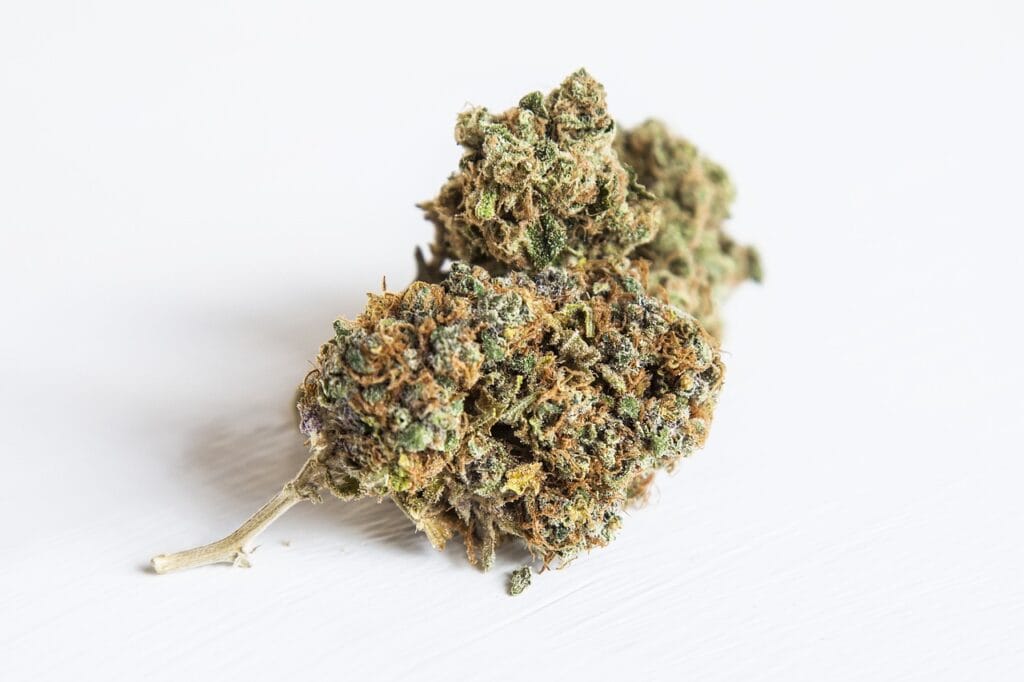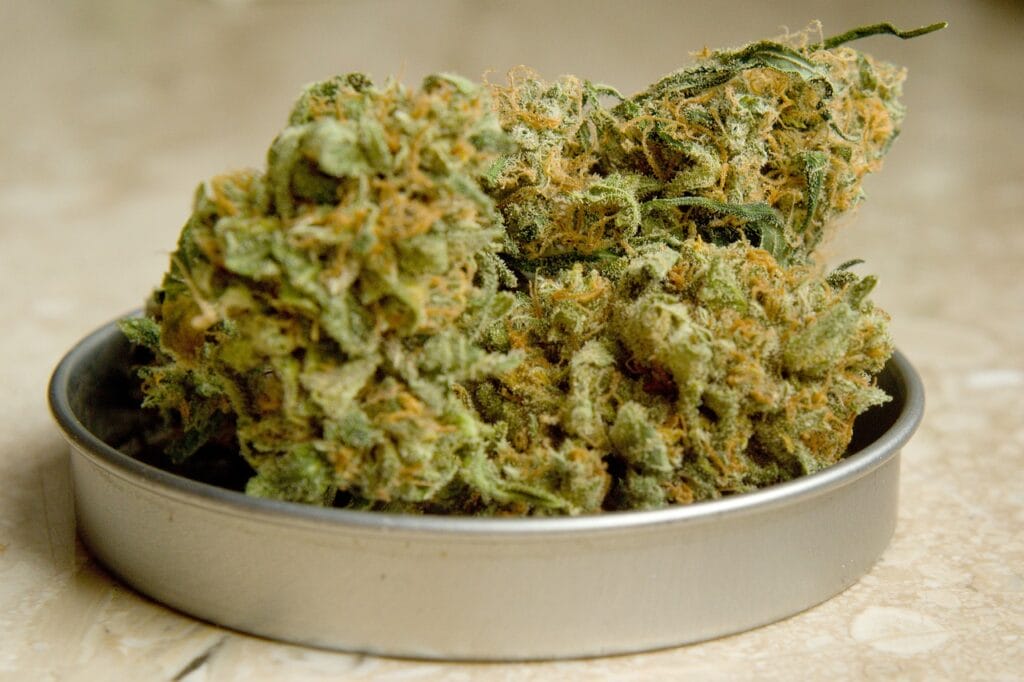There are many different types of edibles, concentrates, and vape pens available, but flower continues to dominate the market as the premier cannabis product. From January to June 2021, flower was the top-selling cannabis product in Canada. Nevada and Ontario lead in flower sales, each with a 56% market share.
Flower remains the most common product in dispensaries. In March 2023, 48% of products on cannabis store menus were flower products. Interest in Sativa weed strains is rising, which reflects Canadians’ preference for Sativa or Indica varieties.
The reason many Canadians buy Sativa weed is due to its invigorating effects and potential health benefits, which are transforming healthcare approaches in Canada.
Table of Contents

Cannabis and Health Care in Canada
Canada has led the way in the cannabis industry, which creates a strong framework for both medical and recreational use. This shift has changed perceptions, with cannabis now seen as a viable option for health conditions. Canadian healthcare professionals are acknowledging the therapeutic benefits of cannabis for managing various medical conditions.
Cannabis usage is prevalent, with 43% having used it in their lifetime and 12% in the past year. Medical marijuana use has grown sharply, with registered users increasing every year since 2014. Various medical concerns have led to the endorsement of medical cannabinoids, but prescriber enthusiasm varies, which highlights the need for more education and guidance.
Research Insights
A clinical practice guideline was developed in Canada to simplify using Sativa-dominant or pure Sativa strains in primary care. The guideline focuses on evidence-based practices and shared decision-making when using cannabis.
Methods
The Evidence Review Group systematically reviewed key clinical areas related to Sativa dominant hybrids: pain, nausea and vomiting, and spasticity. The Prescribing Guideline Committee (PGC), which consists of nine health professionals and a patient representative, guided the process. Clinicians and patients provided input to refine the guidelines, and they reached recommendations through consensus.
Results
Pain Management
Clinicians may consider the use of medical cannabinoids for refractory neuropathic pain with the following considerations:
- A thorough discussion has occurred with patients regarding the potential benefits and risks of medical cannabinoids for pain management.
- Patients have undergone a reasonable therapeutic trial of three or more prescribed analgesics and continue to experience persistent problematic pain despite optimized analgesic therapy.
- Medical cannabinoids are adjuncts to other prescribed analgesics.
Nausea and Vomiting Relief
Clinicians may consider medical cannabinoids for treating refractory chemotherapy-induced nausea and vomiting (CINV) with the following considerations:
- Ensuring a discussion has occurred with patients regarding the risks and benefits of cannabinoids for CINV
- Confirming patients have undergone a reasonable therapeutic trial of standard therapies and continue to experience persistent CINV
- Understanding that medical cannabinoids are supplementary to other prescribed therapies
Spasticity Reduction
Clinicians may consider the use of medical cannabinoids for refractory spasticity in both multiple sclerosis (MS) and spinal cord injury (SCI) with the following considerations:
- Prior discussion with patients regarding the potential benefits and risks associated with medical cannabinoids for managing spasticity.
- Patients have undergone a reasonable therapeutic trial of standard therapies, like nonpharmaceutical measures, and continue to experience persistent spasticity.
Why Sativa Weed Strains For Medical Purposes
Sativa marijuana strains are one of the two primary species of cannabis, the other being Cannabis Indica strains. Sativa plants are prevalent for their tall, slender stature and narrow leaves. They thrive, grow in warmer climates, and have a longer flowering time than Indica plants.
Cannabis Sativa strains are associated with uplifting and energizing effects, which makes them popular for daytime use. Sativa weed may produce psychoactive effects such as euphoria, increased energy, and heightened sensory perception. Indica weed strains induce drowsiness.
Medicinal Uses of Sativa Weed Strains
Pain Relief
Sativa cannabis strains can alleviate chronic pain like arthritis, neuropathic pain, migraines, fibromyalgia, and multiple sclerosis. Cannabinoids act by signalling cannabinoid receptors to regulate the sensation of pain. Two key types of receptors, Cannabinoid Receptor I and II (CB1 and CB2) play distinct regulatory roles.
CB1 receptors are present in the central nervous system. This system controls sensory information reception, response reactions, and behavioural functions. Cannabinoids can’t fully replace the strong pain relief from opiates, especially for acute trauma or injuries, but they can effectively complement them. Combining cannabinoids with lower doses of opiates can boost pain relief and reduce the chances of side effects and opiate dependence.
Mood Disorders
Cannabinoids have demonstrated efficacy in laboratory studies and rodent tests for their antidepressant activity. These effects operate through mechanisms akin to current antidepressant medications.
Cannabinoids may help with depression by boosting CB1 activity in the brain’s hippocampus, which creates an antidepressant effect.
Various studies have shown that cannabinoids can influence mood in depression through diverse pathways or mechanisms, with THC and whole-spectrum cannabis being primary examples. THC binds relatively equally to both CB1 and CB2 receptors. Depressed patients often prefer Sativas and Sativa-dominant strains, which have a higher THC: CBD/CBN ratio, as they provide uplifting effects.
Increased Alertness and Focus
Sativa cannabis strains can increase alertness and focus. Sativa strains can provide a natural energy boost without the negative effects associated with caffeine or other stimulants.
Dopamine, a neurotransmitter for regulating motor function, learning, and emotional responses, also plays a role in the neuroscience of creativity and focus. Experimental studies indicate that dopamine enhances attention, particularly in ensuring flexible and appropriate shifts in focus.
THC triggers dopamine release. Acute cannabis use also increases blood flow to the frontal lobes. Given cannabis’s impact on cerebral blood flow and the dopaminergic system, it could affect focus through various mechanisms.
Research also suggests that cannabis affects individuals with ADHD differently than those without the condition. A case report from Germany detailed a 28-year-old male who showed improvement in attention and performance-related tasks when using cannabis. This indicates that THC may have atypical effects on individuals with ADHD, potentially enhancing performance in certain tasks.
Sativa Cannabis Strain for Health
When selecting the best Sativa strains or Sativa-dominant hybrid strains for health, several varieties stand out for their unique medicinal properties. Some popular Sativa strains include Jack Herer, Lemon Haze, and Supersonic.
| Criteria | Lemon Haze | Jack Herer | Supersonic |
| Flavours | Citrus | Pine, Spice | Herbal, tropical |
| THC | 26 | 21 | 21 |
| CBD | 0.3 | 0.28 | 0.5 |
| Effects | Happy, Euphoric, Aroused, Focused, Uplifted | Creative, Uplifted, Focused, Energetic, Happy | Relaxed, Talkative, Happy, Uplifted, Euphoric |
Tips When Using Sativa Cannabis
- Begin with a low Sativa weed dose to gauge your tolerance, especially if you’re new to cannabis or trying a new strain. Assess the effects before consuming more to avoid overdoing it.
- Gradually increase the Sativa dosage until you reach your desired high level if needed.
- Keep hydrated by drinking water, especially if you’re smoking or vaping.
- Sativa strains can enhance sensory perception and creativity, but be mindful of your surroundings. Avoid activities that require full cognitive function until you know how the strain affects you.
- Choose a safe and comfortable space to consume, whether alone or with others. Make sure it’s free from potential hazards or distractions to ensure a positive experience.
- Explore alternative consumption methods, such as edibles or tinctures, to find what works best for you regarding onset time and overall experience.

Buy Sativa Weed Online for Multiple Selection
GrassLife offers multiple Sativa strains in Canada that cater to all cannabis connoisseurs. Our diverse weed selection ensures you find the perfect strain for your needs. With our quality standards, you’re guaranteed premium products delivered straight to your door. Count on us for a convenient and satisfying cannabis shopping experience.
Frequently Asked Questions
How do I choose the best Sativa strain?
- Potency: Decide how strong you want the effects to be. Some have high THC for a powerful high, while others are milder.
- Aroma and Flavour: Explore different scents and tastes. Some are citrusy, fruity, or earthy, while others are floral or spicy. Pick what smells and tastes good to you.
- Cannabinoid Profile: Look at the THC and CBD levels. THC gives the high, while CBD can add therapeutic benefits like reducing anxiety. Find the right balance for your needs.
- Genetics and Lineage: Learn about the background of the Sativa plant. Some are pure Sativas, while others are hybrids. Understanding the lineage can give you clues about its effects and traits.
Can you smell the difference between the Indica and Sativa strains?
Some believe that Indica plants and buds tend to have a pungent, skunky smell, while Sativa plants produce a less noticeable aroma, often citrusy or herbal.
The best way to identify the type of cannabis is to observe the physical plant, ask your budtender, know the genetic lineage, or experience the effects. Determining the type of cannabis by its scent can be unclear because hybrid strains exist, which combine the characteristics of Indica and Sativa.
Which offers better therapeutic benefits: Sativa-dominant or pure Sativa strains?
Both strains have a Sativa lineage, which can reduce pain, improve focus, and enhance mood. Sativa-dominant cannabis offers the added benefit of addressing insomnia due to the presence of Indica genetics.



